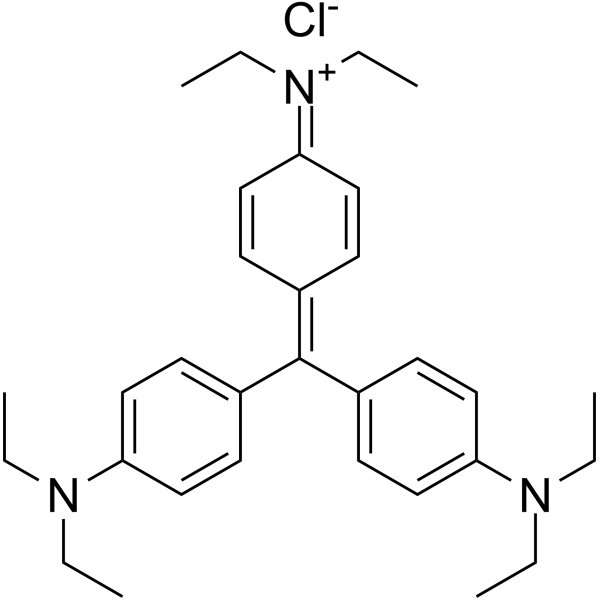Photophysical, photochemical, and tumor-selectivity properties of bromine derivatives of rhodamine-123.
Silvia H D Lacerda, Bindu Abraham, Thomas C Stringfellow, Guilherme L Indig
文献索引:Photochem. Photobiol. 81(6) , 1430-8, (2005)
全文:HTML全文
摘要
The conceptual basis for the development of mitochondrial targeting as a novel therapeutic strategy for both chemotherapy and photochemotherapy of neoplastic diseases rests on the observation that enhanced mitochondrial membrane potential is a common tumor cell phenotype. The potential of this strategy is highlighted by the fact that the toxic effects associated with a number of cationic dyes known to localize in energized cell mitochondria are much more pronounced in tumor cells than in normal cells. Here we evaluate the phototoxic properties of four bromine derivatives of rhodamine-123 toward human uterine sarcoma (MES-SA) and green monkey kidney (CV-1) cells and compare the degrees of tumor cell selectivity associated with these dyes with those associated with two model mitochondrial triarylmethanes (crystal violet and ethyl violet). Selective phototoxicity toward tumor cells was found to be highly dependent upon the lipophilic/hydrophilic character of the cationic photosensitizer. Our experimental data have indicated that the probability of success of mitochondrial targeting in (photo)chemotherapy of neoplastic diseases is higher when the octan-1-ol/water partition coefficient of the drug candidate falls within approximately two orders of magnitude from that of the prototypical mitochondria-specific dye rhodamine-123.
相关化合物
| 结构式 | 名称/CAS号 | 分子式 | 全部文献 |
|---|---|---|---|
 |
乙基紫
CAS:2390-59-2 |
C31H42ClN3 |
|
TOF-S-SIMS molecular depth profiling of organic bilayers usi...
2009-04-01 [Anal. Bioanal. Chem 393(8) , 1917-21, (2009)] |
|
Background-free, fast protein staining in sodium dodecyl sul...
2002-12-01 [Electrophoresis 23(24) , 4053-9, (2002)] |
|
Adsorption of ethyl violet dye in aqueous solution by regene...
2005-09-15 [J. Colloid. Interface Sci. 289(2) , 333-8, (2005)] |
|
Effect of self-association and protein binding on the photoc...
1999-10-01 [Photochem. Photobiol. 70(4) , 490-8, (1999)] |
|
Previsible silver staining of protein in electrophoresis gel...
2008-12-15 [Anal. Biochem. 383(2) , 137-43, (2008)] |